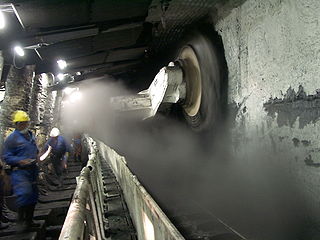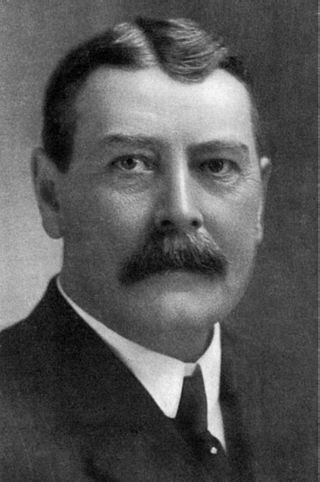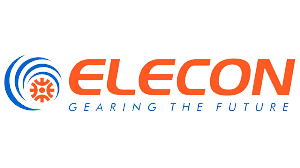
Sandvik AB is a Swedish multinational engineering company specializing in products and services for mining, rock excavation, rock drilling, rock processing, metal cutting and machining. The company was founded in Gävleborg County, Sweden, in 1862. In 2023, it had approximately 41,000 employees and a revenue of 127 billion SEK, with sales in around 170 countries.

The Geo D. Whitcomb Company was founded by George Dexter Whitcomb (1834–1914), of Chicago, Illinois, who started a modest machine shop in 1878, and began the manufacture of coal mining machinery, laying the foundation for the concern that became known as The Whitcomb Locomotive Company.

The Chicago Tunnel Company was the builder and operator of a 2 ft narrow-gauge railway freight tunnel network under downtown Chicago, Illinois. This was regulated by the Interstate Commerce Commission as an interurban even though it operated entirely under central Chicago, did not carry passengers, and was entirely underground. It inspired the construction of the London Post Office Railway.
Henry Beecher Dierdorff was an American inventor of mining equipment, most notable for the first successful application of electricity to power mining equipment under the surface of earth.

Longwall mining is a form of underground coal mining where a long wall of coal is mined in a single slice. The section of rock that is being mined, known as the longwall panel, is typically 3–4 km (1.9–2.5 mi) long, but can be up to 7.5 km (4.7 mi) long and 250–400 m (820–1,310 ft) wide. The longwall method compares with shortwall, room-and-pillar, and several others.

A bucket-wheel excavator (BWE) is a large heavy equipment machine used in surface mining.

Underground soft-rock mining is a group of underground mining techniques used to extract coal, oil shale, potash, and other minerals or geological materials from sedimentary ("soft") rocks. Because deposits in sedimentary rocks are commonly layered and relatively less hard, the mining methods used differ from those used to mine deposits in igneous or metamorphic rocks. Underground mining techniques also differ greatly from those of surface mining.

Italian Village is a neighborhood in Columbus, Ohio, that contains an array of residential, commercial, and industrial buildings. It is a designated historic district, known for its historical and cultural preservation. The building types and architecture reflect Italian influence. With its parks and preserved historic homes, Italian Village has the highest home value appreciation in Columbus.

Superior Industries, Inc. is an American manufacturing company headquartered in Morris, Minnesota. The company engineers, manufactures, sells and supports dry bulk processing and handling equipment and components. In 2008, Superior acquired Westmor Industries, a manufacturer and distributor of energy storage, transportation and dispensing equipment also headquartered in Morris.

Kay Moor, also known as Kaymoor, is the site of an abandoned coal mine, coal-processing plant, and coal town near Fayetteville, West Virginia. The town site is located in the New River Gorge at Kaymoor Bottom (38°03′00″N81°03′17″W). It is linked to the mine portal 560 feet (170 m) above on Sewell Bench (38°02′52″N81°03′58″W) in the wall of the Gorge by conveyors.
The Meco-Moore cutter loader was an early twentieth-century British mining machine. It was invented by Mr M. Moore, and developed by the Mining Engineering Company (MECO) of Worcester. It was a heavy machine and was first used in a coal mine in Lancashire, England 1934. The design was such that it worked along the coal seam The machine's cutter bars, the "jibs" as they were called, were designed to both shear and undercut the coal seam. The cut coal was cut onto the connected conveyor belt system which took it towards the mine's entrance. It was, or was among, the first such machines to do both cutting and loading at the same time. The machine increased both productivity and safety.

The Anderton Shearer Loader is a coal cutting machine which was used in the UK coal industry after 1953. The Anderton Power Loader with its cutting drum up to five feet in diameter was patented in 1953. It was successfully used throughout the British coalfields and by 1966 cut half the coal produced and by 1977 it produced 80% of the coal mined in Britain.

Joy Global Inc. was a company that manufactured and serviced heavy equipment used in the extraction and haulage of coal and minerals in both underground and surface mining. The company had manufacturing facilities in Alabama, Pennsylvania, Texas, Wisconsin, Australia, Canada, China, France, South Africa, Poland and the United Kingdom. In 2017, Joy Global was acquired by Komatsu Limited and was renamed Komatsu Mining Corp.

Elecon Engineering Company Limited is an Indian multinational company headquartered in Anand, Gujarat. The company specializes in the manufacturing of industrial gear and material handling equipment. Elecon is one of the largest Asian manufacturers of industrial gears and material handling equipment for core major sector like power, steel, cement, sugar, paper, mining, rubber and many more. Elecon group has subsidiaries such as Eimco Elecon Ltd, Elecon Hydraulics, Elecon Information Technology Ltd (EITL) and Tech Elecon Pvt. Ltd. (TEPL).
Novelty Glass Company of Fostoria was one of over 70 glass manufacturing companies that operated in northwest Ohio during the region's brief Gas Boom in the late 19th century. The company made bar goods, stemware, and novelties. Organization of the firm began late in 1890, with banker Rawson Crocker as president and veteran glass man Henry Crimmel as plant manager. Production started in February 1891. The plant was built on the site of the former Buttler Art Glass Company, which had been destroyed by fire in 1889.
Intelligrated, Inc. was a material handling automation and software engineering company based in Mason, Ohio. In 2016, it was acquired by Honeywell, who made it a subsidiary and renamed it to Honeywell Intelligrated. 2017, Honeywell Intelligrated reported revenue of $1 billion. Honeywell Intelligrated has production and service locations in the United States, Canada, India, Mexico, Brazil, and China.
Milo-Grogan is a neighborhood of Columbus, Ohio. The neighborhood was settled as the separate communities of Milo and Grogan in the late 1870s. Large-scale industrial development fueled the neighborhood's growth until the 1980s, when the last factories closed. The community has received urban renewal efforts in recent years fueled by the Columbus Department of Development and Milo-Grogan Area Commission.

Acland No. 2 Colliery is a heritage-listed former mine at 2 Francis Street, Acland, Toowoomba Region, Queensland, Australia. It was added to the Queensland Heritage Register on 29 June 2007.

Kilbourne and Jacobs Manufacturing Company was founded in 1881 by James Kilbourne and HL Jacobs in Columbus, Ohio with an initial investment of $100,000. Built in close proximity to Union Station, the company produced wheelbarrows, horse-drawn railroad scrapers and other earth-moving equipment during the turn of the century. Several years after opening, the company developed a line of hand trucks, forty percent of which were sold to the New York Central Railroad. By the end of the 19th century, Kilbourne and Jacobs was the largest manufacturer of earth-moving equipment in the United States. The Ohio State Journal reported in 1890 that the company produced approximately 150,000 hand trucks per year with between 400-600 workers, pushing annual sales to nearly $1 million.

The former Columbus Railway, Power & Light office is a historic building in the Milo-Grogan neighborhood of Columbus, Ohio. The two-story brick structure was designed by Yost & Packard and built in the 1890s as a transportation company office. The property was part of a complex of buildings, including a power plant, streetcar barn, and inspection shop. The office building, the only remaining portion of the property, was utilized as a transit office into the 1980s, and has remained vacant since then. Amid deterioration and lack of redevelopment, the site has been on Columbus Landmarks' list of endangered sites since 2014.



















